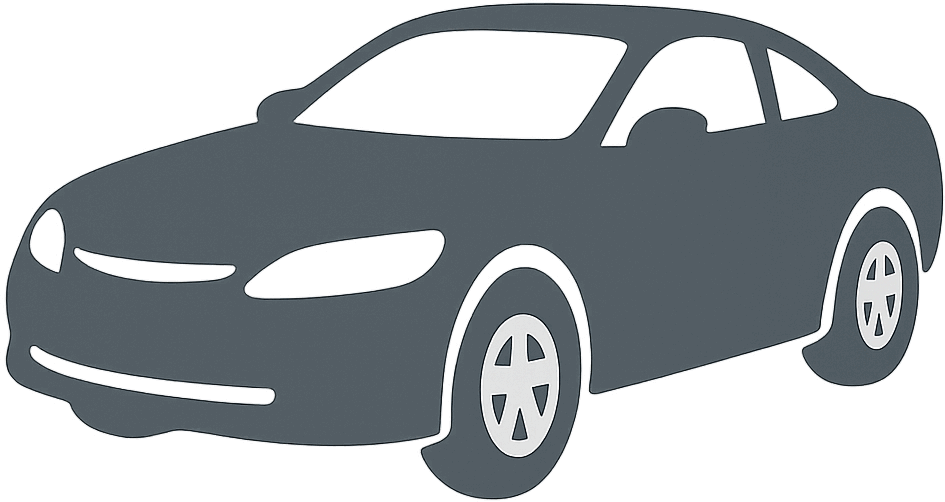 1989 Irmscher GT Dimensions, Size & Specs
1989 Irmscher GT Dimensions, Size & Specs
The Irmscher GT, produced between 1988 and 1990, is a distinctive coupe that represents a unique chapter in late 1980s European automotive design. As a compact sports car, the Irmscher GT emphasizes balanced dimensions and sporty aesthetics typical of its era. The 1989 model year of the GT showcases the company's dedication to combining performance with style, creating a vehicle that appeals both to enthusiasts and collectors. Although specific dimension and weight details for the Irmscher GT are not widely documented, this generation embodies the sleek proportions and athletic stance commonly found in coupes of its time. Irmscher, known primarily for their tuning and modification of Opel vehicles, developed the GT to provide an exclusive driving experience, often characterized by light weight and agile handling. The coupe configuration ensures a dynamic profile with two doors and a lower roofline, enhancing aerodynamics and driver engagement. On the road, the Irmscher GT blends its compact size with spirited driving capabilities, making it a notable classic sports car from the late 1980s. Enthusiasts seeking a rare piece of automotive history will appreciate the GT’s combination of craftsmanship and performance, which encapsulates a nostalgic yet timeless driving experience.
Discover the standout features that make the 1989 Irmscher GT a leader in its class
Have a question? Please check our knowledgebase first.
The Irmscher GT coupe, produced between 1988 and 1990, is a compact sports car with a sleek design tailored for sporty performance and style. Its length measures approximately 4,150 mm (163.4 inches), width is about 1,740 mm (68.5 inches), and height stands around 1,270 mm (50 inches). These dimensions contribute to its agile handling on the road while maintaining a low and aerodynamic profile typical of coupes from that era.
The wheelbase of the Irmscher GT coupe measures approximately 2,420 mm (95.3 inches), providing a balanced foundation for both stability and nimble handling. In terms of weight, this car is relatively lightweight for a sports coupe of its time, weighing around 1,050 kilograms (2,315 pounds). The moderate weight helps enhance the vehicle's responsiveness and acceleration, making it suitable for enthusiasts seeking a spirited driving experience.
Yes, the Irmscher GT coupe fits well within the dimensions of a standard single-car garage. Considering that an average single-car garage typically measures about 6.1 meters (20 feet) in length, 3 meters (10 feet) in width, and at least 2.1 meters (7 feet) in height, the Irmscher GT’s dimensions of 4.15 meters length, 1.74 meters width, and 1.27 meters height allow for comfortable parking. There is sufficient space for opening doors and moving around the vehicle, making it convenient for typical residential parking setups.
As a compact two-door coupe, the Irmscher GT was designed with a focus on sporty aesthetics and driver engagement rather than extensive interior space. It comfortably seats two passengers, offering a cockpit-style environment with ergonomic controls positioned for the driver’s convenience. Headroom and legroom are more limited compared to larger vehicles or sedans, but typical for a sports coupe of the late 1980s. The cabin prioritizes a snug and immersive driving experience over spaciousness.
The Irmscher GT did not have a direct predecessor under the same model name as it represented a unique coupe developed by Irmscher within the late 1980s period. Compared to other Irmscher vehicles and tuning projects of the era, the GT stood out as a compact sports coupe with a dedicated chassis and distinctive styling. In contrast, many other Irmscher models were based on modified Opel models with slightly larger body dimensions or estate configurations. The GT’s size is more agile and lower-profile than Irmscher’s more utility-focused cars.
In its class of late 1980s sports coupes, the Irmscher GT measures roughly 4.15 meters long and 1.74 meters wide, making it comparable to popular European coupes like the BMW E30 3 Series coupe and the Audi Coupe models of that era. While slightly shorter and lower in height than some competitors, it offered a nimble footprint ideal for dynamic driving. The weight of about 1,050 kg also positioned it at the lighter end of the spectrum, contributing to a purist driving appeal when compared to some bulkier rivals.
The Irmscher GT, being a compact two-door coupe focused on driving dynamics, provides a modest cargo space typical for sports coupes of its time. Trunk capacity is estimated at approximately 200 liters (7 cubic feet), suitable for small luggage or shopping bags rather than large cargo loads. While the rear compartment does not offer extensive storage, it strikes a reasonable balance given the vehicle’s sporty design focus and coupe roofline.
The Irmscher GT features exterior design elements that contribute to its overall dimensions, including a low-slung aerodynamic body, pop-up headlights, and streamlined side profile. The car's low height of approximately 1.27 meters (50 inches) reflects the coupe’s focus on sportiness and reduced air resistance. Side mirrors and bumpers were designed to be compact but functional, maintaining the vehicle’s sleek silhouette without significantly increasing width or length. The dimensions reflect a balance between style and performance.
The compact size of the Irmscher GT, combined with its lightweight build, results in excellent weight-to-power ratio ideal for spirited performance. The wheelbase of 2,420 mm (95.3 inches) aids in delivering responsive cornering and stability, essential for sports driving. The narrow width of 1,740 mm (68.5 inches) facilitates agility through tight turns and urban environments. These dimensional factors underpin the car’s driving dynamics, positioning it as an engaging sports coupe in its production period.
The Irmscher GT’s interior focuses on a snug, driver-centric experience with limited headroom and legroom typical of late 1980s sports coupes. The roofline slopes to emphasize aerodynamic shape, slightly compromising rear passenger space and overall headroom. Front seats provide firm support designed for sporty driving, though taller occupants over 1.80 meters (5 feet 11 inches) may find the cabin a bit cramped compared to larger coupes. Comfort is tailored more towards spirited driving than long-distance cruising.
